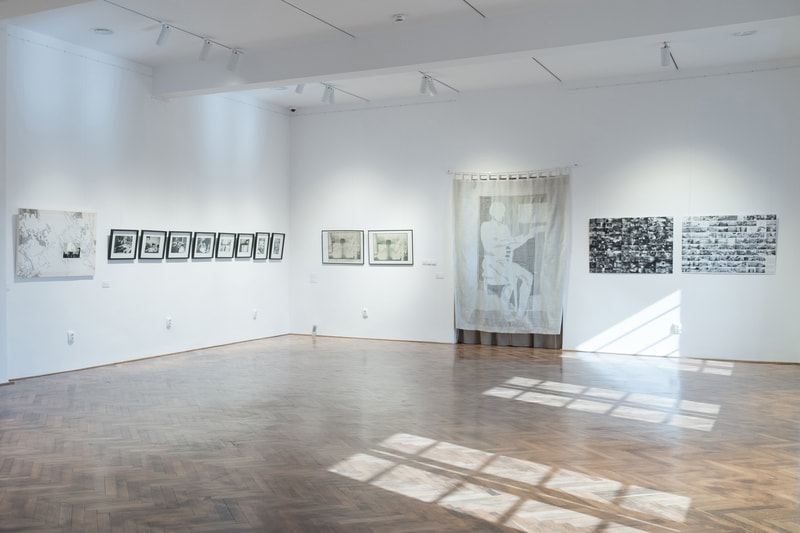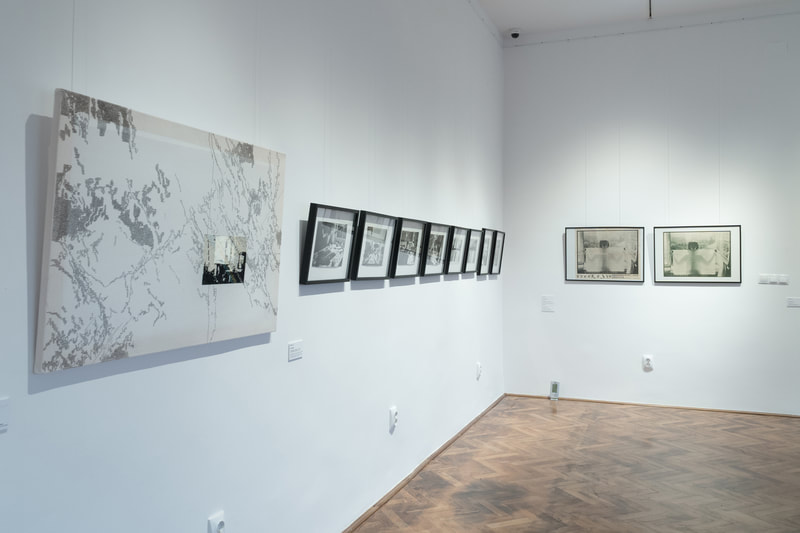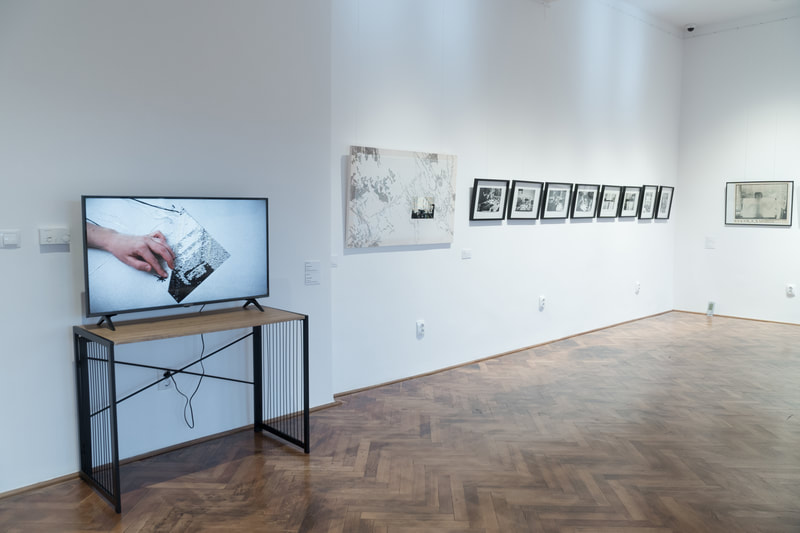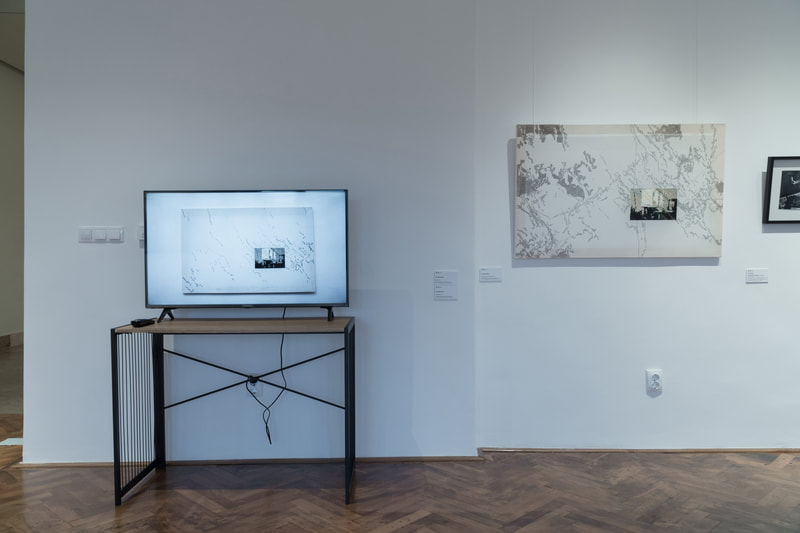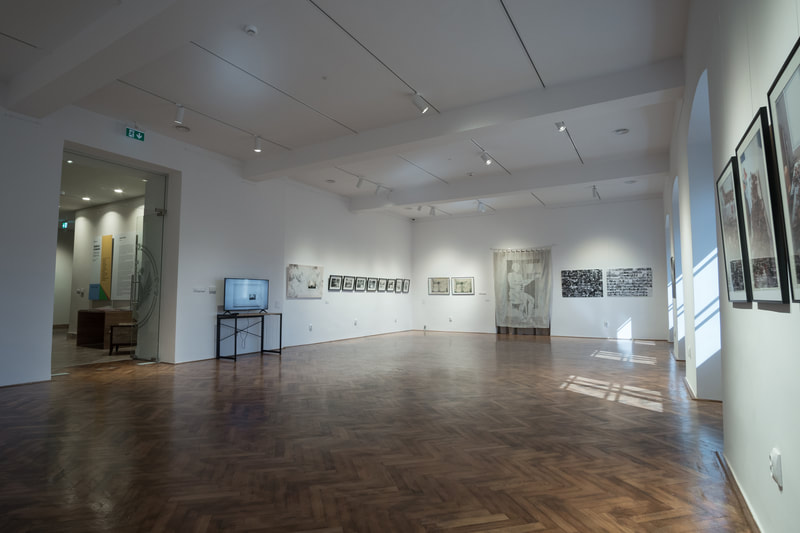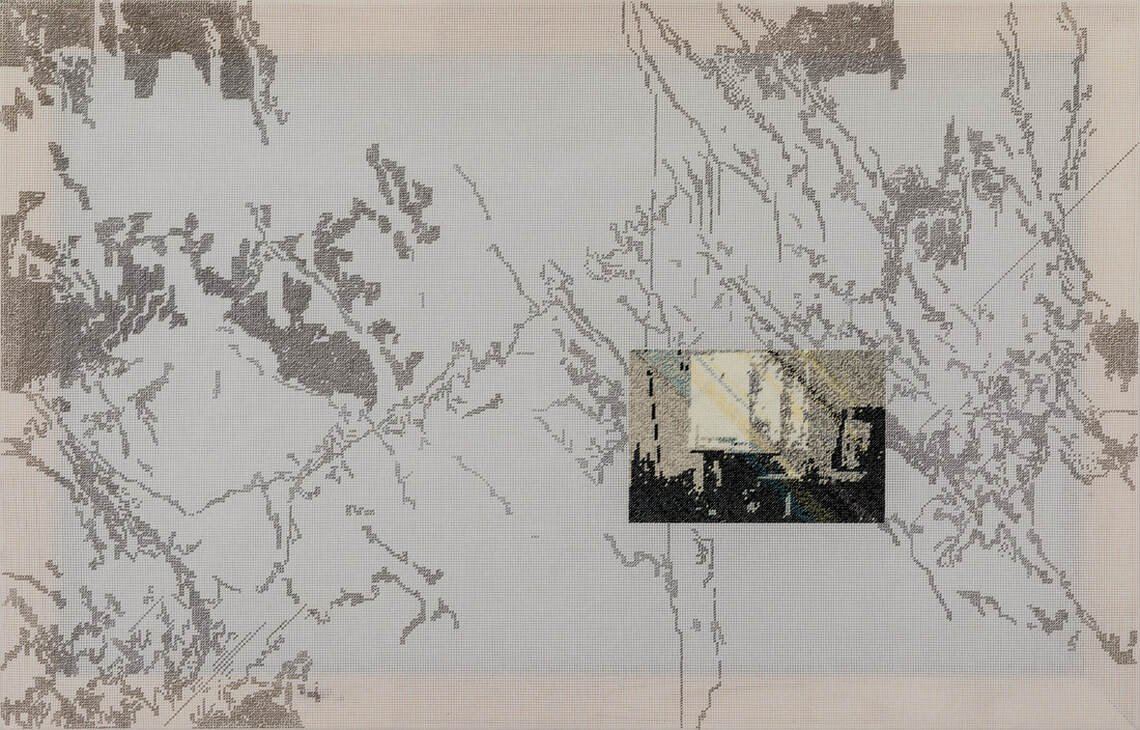|
THE ARTIST'S WORKSHOP
Dates | May 1, 2022 - August 1, 2022 Opening | Saturday, April 30, starting at 17:00 Location | Roman Catholic Episcopal Palace of Oradea, 2 Șirul Canonicilor, 2nd floor Curator | Sorina Jecza Artists | Marius Bercea, Oana Fărcaș, Ion Grigorescu, Márta Jakobovits, Gyöngyi Kerekes, Tincuța Marin, Ana Maria Micu, Ioan Aurel Mureșan, Paul Neagu, Lia și Dan Perjovschi, Marilena Preda-Sânc, Cristian Sida, Ujvárossy László. The event will be punctuated by the cello recital given by the soloist Alexandra Guțu from Timișoara. Organizers | Roman Catholic Diocese of Oradea, Interart TRIADE Foundation https://triade.ro/events/atelierul-artistului/ |
|
With a well-recognized history, the subject matter of "the artist's studio" is still a constant in the practices of many creators. Either it is treated in the traditional academic way, as a genre scene, with scenographic details that indicate the physical space to which the artist links his existence, or it involves self-referential details about the creation, by including “painting-within-a-painting”, or evokes the process of elaboration of the work, the studio reserves the ascendancy of a meta-language, as an instrument of introspection on its own creative approach or a metonymic sign that can substitute - physically or spiritually - for the artist himself.
The image of the workshop is the artist's self-knowledge tool, able to probe both the outer distances and the inner depths of the artistic self. By painting his workshop - or invoking it through any other medium of expression - the artist performs an autoscopy on his own being, through which he can observe the dynamics of his inner movements.
Projecting himself onto the studio, the artist projects himself through the objects staged, through the space that creates the scenography, through the included characters or the selected details and fragments. This is what Aman did when he created sets that absorbed, emphatically, his personality, this is the reading proposed by Nicolae Grigorescu when he projects the atmosphere with which he identifies in the workshop, so does Gheorghe Petrașcu when he finds himself, recurrently, in the studio house from Târgoviște - in order to invoke only a few notorious examples from Romanian art history.
In the exhibition that brings together works from the Böhm Collection in the Roman Catholic Episcopal Palace, the motif of the studio is in a work by the painter Ernő Tibor that captures a scene from the studio of his colleague Alfred Macalik, probably in the famous Ullmann Palace.
Physical space or meta-space, the “artist’s workshop” is a thematic node full of meaning, an approach through which creators visually investigate the world - theirs and the one in which they live -, an exercise of complex reflection and self-reflection that is worthy of research.
The artists selected in this exhibition reflect in different mediums - painting, photography, installation, media - the theme of the studio. They are: Marius Bercea, Oana Fărcaș, Ion Grigorescu, Marta Jakobovits, Gyöngyi Kerekes Újvárossy, Tincuța Marin, Ana Maria Micu, Ioan Aurel Mureșan, Paul Neagu, Lia și Dan Perjovschi, Marilena Preda-Sânc, Cristian Sida, Ujvárossy László.
Belonging to generations that cover the last half-century, their concern for the same subject matter is an indication of the constant self-interrogation with which the artist crosses time.
We propose, therefore, to present some hypostases of this reflection on the relationship that artists create with their studios in an exhibition built on the framework of this thematic core. - Sorina Jecza
Sorina Jecza (curator of the exhibition), has been a notable presence in the Romanian cultural space for several decades. She has carried out ample activities, ranging from art and critical essays, to research, documentation and book publishing. Doctor in visual arts (since 2006), she has a relevant expertise in the field of sculpture. She collaborated, as curator, with the main art museums or cultural centers in the country (Timișoara, Cluj, Craiova, Oradea, Mogoșoaia Brâncovenești Palaces, Cantacuzino Palace). As president of the Triade Foundation in Timișoara, she has significant experience in cultural management: founding the Triade Sculpture Park in the public space, recovering the avant-garde movement in Timișoara (Group 1.1.1, Sigma Group), restoring the values of the period 60-89, promoting emerging art, through the Juventus program. She played an active role in presenting Romanian art abroad, by organizing numerous international projects that included important names of the Romanian art scene, such as Paul Neagu, Constantin Flondor, Grupul Sigma, Roman Cotoșman, Peter Jecza. She is the co-founder of the Art Encounters Foundation and of the biennial with the same name.
Media Coverage
pdf with extensive article in Romanian by Sorina Jecza, contextualising the exhibition space and presenting the artists' concepts, published in Observator Cultural
pdf with exhibition report in Hungarian by Horváth Gizella for Újvárad Cultural Magazine
The image of the workshop is the artist's self-knowledge tool, able to probe both the outer distances and the inner depths of the artistic self. By painting his workshop - or invoking it through any other medium of expression - the artist performs an autoscopy on his own being, through which he can observe the dynamics of his inner movements.
Projecting himself onto the studio, the artist projects himself through the objects staged, through the space that creates the scenography, through the included characters or the selected details and fragments. This is what Aman did when he created sets that absorbed, emphatically, his personality, this is the reading proposed by Nicolae Grigorescu when he projects the atmosphere with which he identifies in the workshop, so does Gheorghe Petrașcu when he finds himself, recurrently, in the studio house from Târgoviște - in order to invoke only a few notorious examples from Romanian art history.
In the exhibition that brings together works from the Böhm Collection in the Roman Catholic Episcopal Palace, the motif of the studio is in a work by the painter Ernő Tibor that captures a scene from the studio of his colleague Alfred Macalik, probably in the famous Ullmann Palace.
Physical space or meta-space, the “artist’s workshop” is a thematic node full of meaning, an approach through which creators visually investigate the world - theirs and the one in which they live -, an exercise of complex reflection and self-reflection that is worthy of research.
The artists selected in this exhibition reflect in different mediums - painting, photography, installation, media - the theme of the studio. They are: Marius Bercea, Oana Fărcaș, Ion Grigorescu, Marta Jakobovits, Gyöngyi Kerekes Újvárossy, Tincuța Marin, Ana Maria Micu, Ioan Aurel Mureșan, Paul Neagu, Lia și Dan Perjovschi, Marilena Preda-Sânc, Cristian Sida, Ujvárossy László.
Belonging to generations that cover the last half-century, their concern for the same subject matter is an indication of the constant self-interrogation with which the artist crosses time.
We propose, therefore, to present some hypostases of this reflection on the relationship that artists create with their studios in an exhibition built on the framework of this thematic core. - Sorina Jecza
Sorina Jecza (curator of the exhibition), has been a notable presence in the Romanian cultural space for several decades. She has carried out ample activities, ranging from art and critical essays, to research, documentation and book publishing. Doctor in visual arts (since 2006), she has a relevant expertise in the field of sculpture. She collaborated, as curator, with the main art museums or cultural centers in the country (Timișoara, Cluj, Craiova, Oradea, Mogoșoaia Brâncovenești Palaces, Cantacuzino Palace). As president of the Triade Foundation in Timișoara, she has significant experience in cultural management: founding the Triade Sculpture Park in the public space, recovering the avant-garde movement in Timișoara (Group 1.1.1, Sigma Group), restoring the values of the period 60-89, promoting emerging art, through the Juventus program. She played an active role in presenting Romanian art abroad, by organizing numerous international projects that included important names of the Romanian art scene, such as Paul Neagu, Constantin Flondor, Grupul Sigma, Roman Cotoșman, Peter Jecza. She is the co-founder of the Art Encounters Foundation and of the biennial with the same name.
Media Coverage
pdf with extensive article in Romanian by Sorina Jecza, contextualising the exhibition space and presenting the artists' concepts, published in Observator Cultural
pdf with exhibition report in Hungarian by Horváth Gizella for Újvárad Cultural Magazine
HOMEMADE CURE FOR DIGITAL SPLEEN
by Ana maria Micu
2016
This picture-in-picture composition is an assembly focalized on a small image sewed onto a background tapestry canvas, that spreads wider and holds also a larger abstract drawing.
While learning, as an absolute novice, to perform needlepoint basketweave stitch, I was caught up by the unique opportunity that it offers, to introduce, as you advance from the top right corner diagonally towards the lower left one, a blend of subjective and random noise. I chose to work with yarn made on the spot, from combining deliberately mismatched threads, uneven in thickness, color, and material. It was me, mostly based on my whims, who decided when I wanted some yellow lines, for instance, but upon closer inspection, the way the threads twist to reveal one color or another, how long it takes until you have to reload the needle, the white underneath that remains visible at times, all these are aspects that interfere with the rendering, steering it away from my control. When things like these happen, you are entertained by your own work and a system closes around you.
It is a technique that reproduces a reference image, similar in this regard to my usual practice of transferring a photographic source into realist paintings. The diagram was obtained by drastically simplifying a photograph I would normally use as a sketch for a painting, representing a studio room I had at the time. Deprived of details as it is, it took me nonetheless about a month to sew it. Because of this investment, the results are suitable for consideration, much more so than the visual offering of a very poor-quality digital image file. The thing to observe here is that at the moment when a photograph “dies”, it is still a photograph. We have the ability to recognize its nature, and we are able to tell that it is distinctively different from a freehand drawing, equally minimal, as exemplified in the spontaneous sprawling with which I continued on every side of the needlepoint area.
And the larger drawing, comprised of the white canvas left untouched and short marker slashes, crossing specific intersections and accumulating in dark shapes, also presents some interesting features on its own. Even though it comes from imagination, it bears a mathematical, thus artificial, character that occurs from giving the perpendicular weave its due. I find this very beautiful - like being able to enter an engineered space and take all kinds of liberties to construct a vision of another world. And this one too is a most faithful diagram. Only time is needed for everything to be completely sewn into place and anyone could embark upon the task to finish it.
by Ana maria Micu
2016
This picture-in-picture composition is an assembly focalized on a small image sewed onto a background tapestry canvas, that spreads wider and holds also a larger abstract drawing.
While learning, as an absolute novice, to perform needlepoint basketweave stitch, I was caught up by the unique opportunity that it offers, to introduce, as you advance from the top right corner diagonally towards the lower left one, a blend of subjective and random noise. I chose to work with yarn made on the spot, from combining deliberately mismatched threads, uneven in thickness, color, and material. It was me, mostly based on my whims, who decided when I wanted some yellow lines, for instance, but upon closer inspection, the way the threads twist to reveal one color or another, how long it takes until you have to reload the needle, the white underneath that remains visible at times, all these are aspects that interfere with the rendering, steering it away from my control. When things like these happen, you are entertained by your own work and a system closes around you.
It is a technique that reproduces a reference image, similar in this regard to my usual practice of transferring a photographic source into realist paintings. The diagram was obtained by drastically simplifying a photograph I would normally use as a sketch for a painting, representing a studio room I had at the time. Deprived of details as it is, it took me nonetheless about a month to sew it. Because of this investment, the results are suitable for consideration, much more so than the visual offering of a very poor-quality digital image file. The thing to observe here is that at the moment when a photograph “dies”, it is still a photograph. We have the ability to recognize its nature, and we are able to tell that it is distinctively different from a freehand drawing, equally minimal, as exemplified in the spontaneous sprawling with which I continued on every side of the needlepoint area.
And the larger drawing, comprised of the white canvas left untouched and short marker slashes, crossing specific intersections and accumulating in dark shapes, also presents some interesting features on its own. Even though it comes from imagination, it bears a mathematical, thus artificial, character that occurs from giving the perpendicular weave its due. I find this very beautiful - like being able to enter an engineered space and take all kinds of liberties to construct a vision of another world. And this one too is a most faithful diagram. Only time is needed for everything to be completely sewn into place and anyone could embark upon the task to finish it.
"Two Threads", 2016, 34'49", no sound, HD
This real-time, video only, recording documents a studio practice of building up of an image in needlepoint, from starting a new thread to finishing off another.
This real-time, video only, recording documents a studio practice of building up of an image in needlepoint, from starting a new thread to finishing off another.
“One Day”, 2016, hand-drawn marker dots animation, 3’38”, no sound, HD
This stop motion animation documents one studio day of performative drawing composed of forward slashes marking intersections on the background canvas of a small image rendered in needlepoint.
This stop motion animation documents one studio day of performative drawing composed of forward slashes marking intersections on the background canvas of a small image rendered in needlepoint.
Homemade Cure for Digital Spleen, 2016, needlepoint and marker on canvas, 71 x 111 cm.
